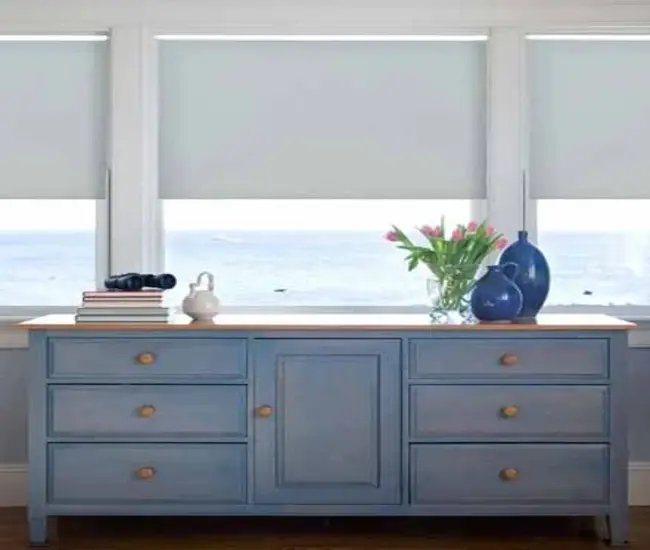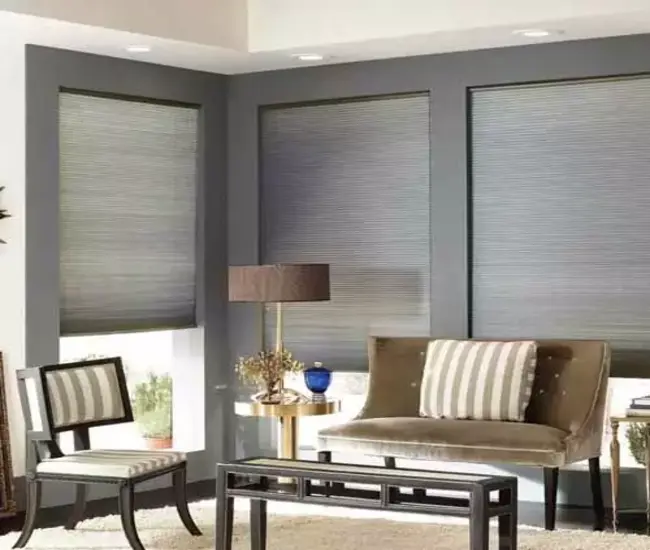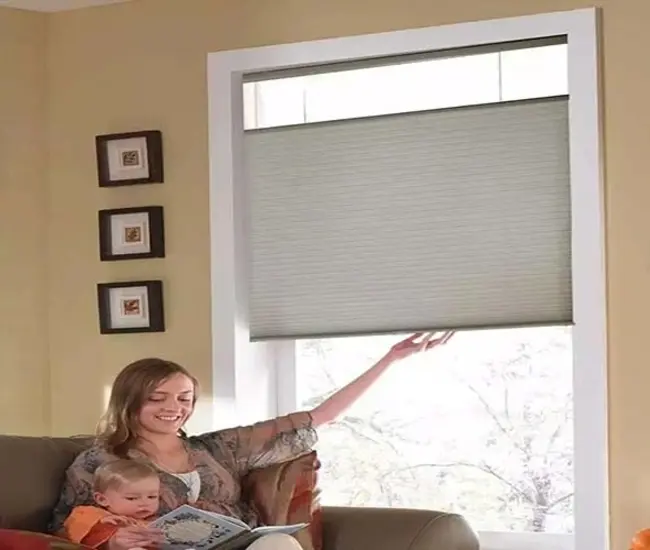When it comes to choosing window treatments for your home, there are a lot of options to choose from. But two popular types of shades are roller shades and cellular shades. What’s the difference between the two types of shades?
Roller shades are made from a single piece of fabric that is rolled up on a tube for an unblocked outside view, while cellular shades for your home’s windows are made from multiple pieces of fabric that are connected in a honeycomb-like structure.
When it comes to appearance, roller shades tend to have a more streamlined look while cellular shades can add some extra dimension and texture to a room in your home.
While both are great window treatments, you will have to look at the pros and cons of each before making a final choice. In addition to their pros and cons, you will have to consider your specific requirements.
Things in a Nutshell!
- Roller shades and cellular shades are two great window treatments, with each having its pros and cons.
- Roller shades for your home’s windows are made from a single piece of fabric while cellular shades are made from multiple pieces of fabric.
- A roller shade exudes a streamlined look while a shade cellular can add some extra dimension and texture to your home’s room.
- When it comes to sunlight control, roller shades provide more complete coverage while cellular shades allow some light to filter through.
- In terms of insulation of your home, cellular shades are more effective at blocking out heat and cold than roller shades.
- Cellular shades or blackout for your home’s windows also tend to be more expensive than roller shades.
So, which type of shade is right for you? It really depends on the pros and cons of shades and your specific needs and preferences. If you’re looking for a more affordable option, roller shades might be the way to go. They will also give you a complete outside view.
But if you’re looking for a shade for your home that will provide better insulation and sunlight control, shade cellular might be a great choice.
What Are Roller Shades and Cellular Shades?

Cellular shades, also known as honeycomb shades, are a type of window covering that uses a series of interconnected cells to trap air and insulate the windows of your home.
Cellular shades are available in a variety of colors and styles, and they can be made from materials like fabric, paper, or plastic.
Roller shades are another type of window covering for your home that consists of a piece of fabric or material that is rolled around a cylinder to give a full outside view.
As a great option, roller shades can be made from a variety of materials, including fabric, paper, or plastic. They are available in a variety of colors and styles, and they can be made with or without a pattern.
Cellular shades and roller shades are two great of window coverings for your home that can provide insulation and privacy. However, each type has its pros and cons.
The Difference in Construction: How are Roller Shades and Cellular Shades Constructed Differently?
Cellular shades and roller shades are constructed differently to provide different levels of light control and privacy. Shade cellular is made of a honeycomb-shaped material that is designed to trap air within its cells.
This helps to reduce heat transfer, making the shades ideal for use in rooms that get a lot of sun exposure. Roller shades, on the other hand, are made of a single piece of fabric that is wrapped around a cylindrical tube.
The fabric can be made of a variety of materials, but it is typically chosen for its light-blocking or sunlight-filtering properties. As a result, roller shades are generally better at providing complete darkness than cellular shades.
However, cellular shades are more energy-efficient since they help to insulate the room from heat loss.
Appearance: What Is the Difference in Appearance between Roller Shades and Cellular Shades?
Cellular shades, also known as honeycomb shades, get their name from their Cellular construction. They have multiple layers of material, similar to an actual honeycomb, which gives them a three-dimensional look.
Cellular shades are available in a variety of colors and styles, and they can be made with materials that range from light-filtering to blackout.
Roller shades are a great type of window covering that consists of a piece of fabric that is wrapped around a roller.
Roller shades are available in a variety of colors and styles, and they can be made with materials that range from sunlight-filtering to blackout.
Both roller shades and cellular shades can be operated manually or with a motorized system. When it comes to appearance, Cellular shades have a more luxurious look, while Roller shades have a more utilitarian look.
- Light Control Functionality

How do roller shades and cellular shades differ in terms of light control?
Cellular shades and roller shades are both popular choices for window coverings, but they differ in terms of light control.
Blackout or cellular shades are made of honeycomb-shaped fabric cells that trap air, providing excellent insulation and light filtering. Roller shades are made of a single piece of fabric that rolls up or down to cover the window.
When it comes to light control, cellular shades are the better choice. The fabric cells diffuse the sunlight, softening the glare and providing a gentle, even light.
Roller shades can provide complete light blockage, but they also allow some light to seep through the cracks. As a result, cellular shades are a better choice if you’re looking for excellent light control.
- Insulation Properties

How do roller shades and cellular shades differ in terms of insulation?
Cellular shades and roller shades are two popular and great types of window treatments. Both offer insulation benefits, but they work in different ways. Cellular shades have a honeycomb design that creates pockets of air.
This trapped air acts as a barrier against heat transfer, helping to keep your home cool in the summer and warm in the winter. Roller shades work by providing a layer of thick fabric that covers the entire window.
This fabric helps to block out light and drafts, creating a more comfortable indoor environment. When it comes to insulation, both Cellular shades and roller shades have their advantages.
Cellular shades are more effective at trapping air, while roller shades provide a more complete seal against drafts.
- The Cost Factor: How Do Roller Shades and Cellular Shades Compare in Terms of Cost?

Cellular shades and roller shades are two popular window treatment options. Cellular shades are made of fabric that is pleated into Cellular pockets, while roller shades are made of a single piece of fabric that is rolled onto a tube for a complete outside view.
Cellular shades tend to be more expensive than roller shades, but they also offer a number of benefits. Cellular shades provide better insulation, which can help to reduce energy costs.
They also have a more luxurious appearance and can add a touch of elegance to any room. Roller shades, on the other hand, are more affordable and easier to install.
They also offer a clean, simple look that can be a great option for more casual spaces. When choosing between cellular shades and roller shades, it is important to consider your budget and the needs of your space.
Summing Up: Which Type of Shade Is Right for You?
Cellular shades are a great type of window shade, which are made of connected, honeycomb-shaped cells. These cells trap air, creating a layer of insulation that can help to keep your home cool in the summer and warm in the winter.
Cellular shades are also very effective at blocking out light, making them a good choice for bedrooms and other rooms where you want to create a dark environment.
Roller shades are another great type of window shade that can be used to control light and temperature in your home. Roller shades are made of a piece of fabric that is rolled onto a spindle, making them very easy to raise and lower.
Roller shades are available in a variety of fabrics, including opaque options that provide complete privacy.
When choosing between cellular shades and roller shades, consider the level of light and privacy you desire, as well as the overall aesthetic of the room.
